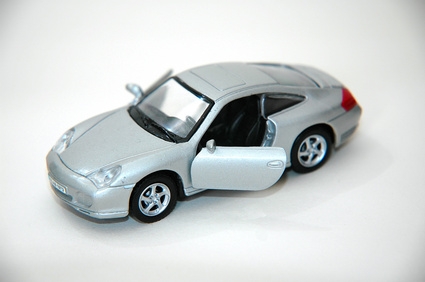
Automobiles are made up of many small components that form complex systems, all of which work together for you to drive the car. Understanding the basic systems and their main components can help the the at-home mechanic perform the proper maintenance and repair.
The drive train is the system that generally makes your car move. It includes the engine, which burns fuel to produce the mechanical energy that moves the car, as well as the transmission, which changes the gear differential to use the power produced by the engine efficiently. It can also include the fuel system, consisting of the tank; various filters, fuel injectors or carburetors; the exhaust system, which removes the engine's waste products; the coolant system, which prevents the engine from overheating, and the braking system, which stops the car.
The chassis of the car contains the skeletal frame of the car. The most notable components of the chassis are the steering system, which allows you to turn the wheels and change direction; the suspension system, which keeps the wheels on the ground, prevents a bumpy ride and stabilizes the steering; the frame that supports all the car's parts and keeps them together, and the wheels.
Much of a car's components run on electricity. This includes the car's computer, which micromanages many of the sensitive components, as well as the engine's spark plugs, headlights, interior and dashboard lights, and stereo system. The car draws its electrical power from its battery, which is charged by the running engine via the alternator.
Much engineering goes into designing the car's body, which is composed of the metal, plastic or fiberglass pieces that cover the hood, roof, doors and sides of the car. It also includes the bumpers, windows, grille and trunk lid. The design of the car body must attempt to minimize drag to increase fuel efficiency, as well as be aesthetically appealing to the driver.
The interior of a car also contains several important components. The dashboard and its various dials tell you the status of your car at any given moment, and no car would be complete without seats, whether they are bucket or bench seats, covered by leather or fabric. Most cars on the road today also include fans and ventilation for air conditioning and heat, as well as controls for those systems. No automobile would be considered safe without seat belts, and many, especially more modern, cars come with passive restraints, such as front and side passenger and driver airbags.